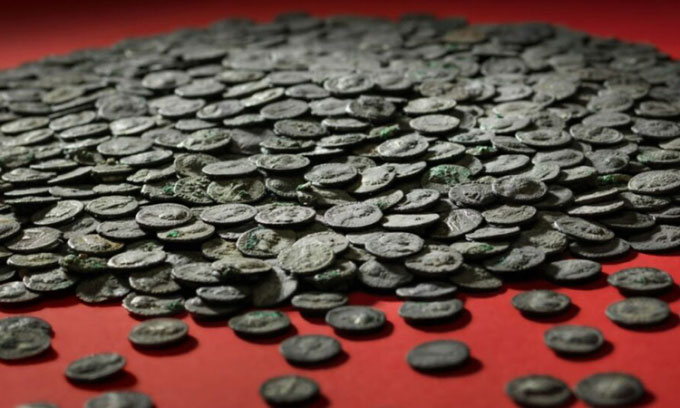Thousands of silver coins hidden around 1,800 years ago for unknown reasons, during the peak of the Roman Empire.
Archaeologists discovered over 5,500 silver coins buried underwater approximately 1,800 years ago in Augsburg, Germany, Live Science reported on November 17. At that time, the Roman Empire was at its height, with Roman currency reaching every corner of its territory, and even beyond.

Approximately 5,500 Roman silver coins discovered in Augsburg. (Photo: Andreas Brücklmair).
These coins are denarii, the standard silver coins used from the 1st century to the early 3rd century, according to Stefan Krmnicek, a professor of ancient coin studies at the University of Tübingen. Experts found them earlier this year.
The coins were scattered in a newly formed hole beneath the ancient riverbed, but this may not be their original location. “The hiding place may have been destroyed a few centuries later due to a flood from the Wertach River, causing the coins to disperse and mix with the gravel under the river,” Krmnicek remarked.
“We have only just begun to clean and study the coins, but so far, it seems the newest coins date back to the early 3rd century, so they may have been buried around this time. We hypothesize that they were buried in the early 3rd century outside of the Roman city of Augusta Vindelicum, near the Via Claudia Augusta,” Krmnicek stated. At that time, Augusta Vindelicum was the capital of the Roman province of Raetia.
The reason for hiding these coins remains a mystery. “We are not sure why this cache of coins was buried,” Krmnicek said. He also mentioned that Leo Brey, a researcher at the University of Tübingen, is attempting to decode this mystery. Besides the coins, scientists found no other artifacts in the surrounding area.

















































